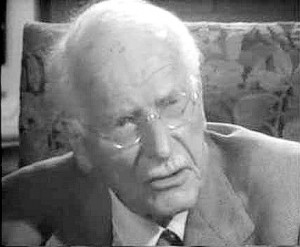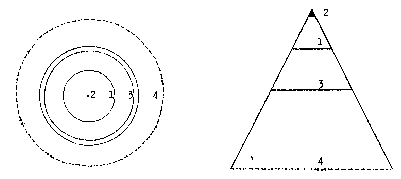

Structure of the unconscious
As was implied in the introduction, the unconscious seems to exhibit some sort of structure. Jung regarded it as being divided into two regions: the personal which is nearer to consciousness and the collective which is further away and even feels foreign in some ways (Jung, CW. 3, par. 3). In his March 1, 1935 E.T.H. lecture, Jung depicted the unconscious schematically from the "top" and as a "cut-away" view (see below). He labeled the diagrams as follows: the smallest circle (1) represents consciousness while the "point" (2) refers to the ego-complex. Further, (3) "is the personal unconscious - a dark zone on which consciousness rests like an island in the sea. The contents of the personal unconscious are mainly attainable, we can with great effort remember the things which it contains, but there is a trench set round this, beyond which is: (4) the collective unconscious. I will represent this by dots, because it is impossible to set boundaries to it. It belongs to humanity in general and also to the animal world" (Jung, 1959, p. 194).

Previous section Next section List of sections List of chapters